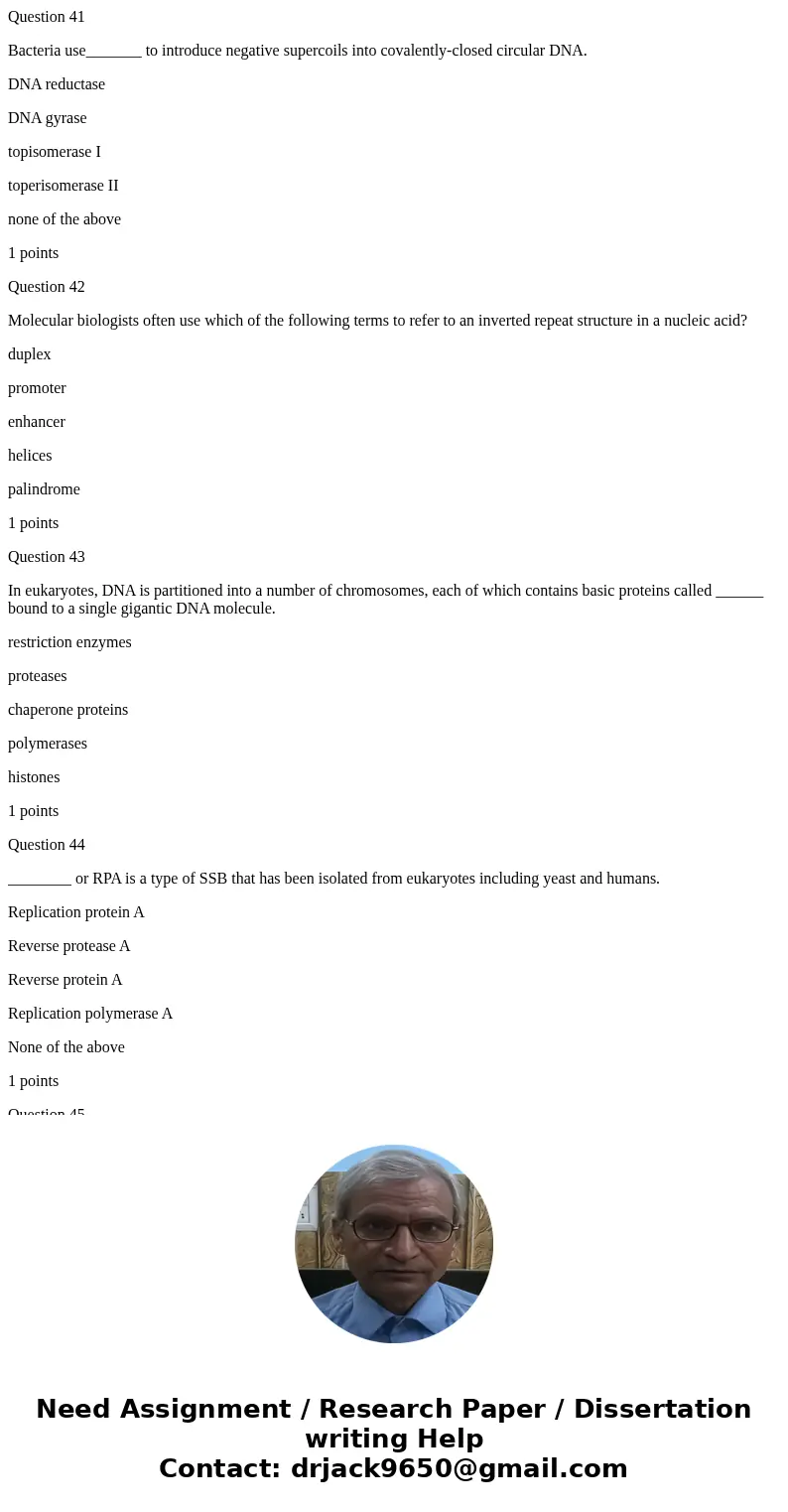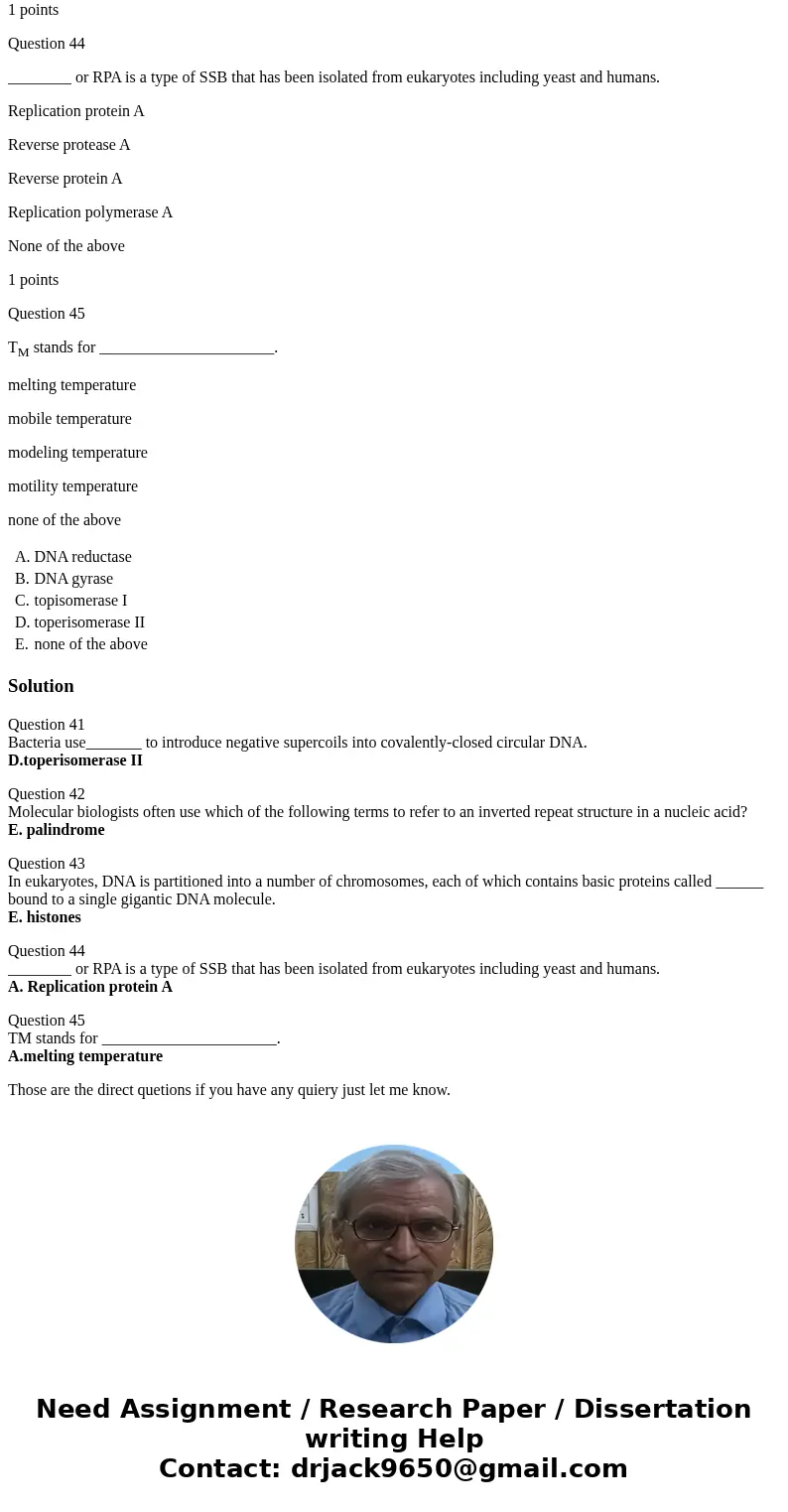Question 41 Bacteria use to introduce negative supercoils in
Question 41
Bacteria use_______ to introduce negative supercoils into covalently-closed circular DNA.
DNA reductase
DNA gyrase
topisomerase I
toperisomerase II
none of the above
1 points
Question 42
Molecular biologists often use which of the following terms to refer to an inverted repeat structure in a nucleic acid?
duplex
promoter
enhancer
helices
palindrome
1 points
Question 43
In eukaryotes, DNA is partitioned into a number of chromosomes, each of which contains basic proteins called ______ bound to a single gigantic DNA molecule.
restriction enzymes
proteases
chaperone proteins
polymerases
histones
1 points
Question 44
________ or RPA is a type of SSB that has been isolated from eukaryotes including yeast and humans.
Replication protein A
Reverse protease A
Reverse protein A
Replication polymerase A
None of the above
1 points
Question 45
TM stands for ______________________.
melting temperature
mobile temperature
modeling temperature
motility temperature
none of the above
| A. | DNA reductase | |
| B. | DNA gyrase | |
| C. | topisomerase I | |
| D. | toperisomerase II | |
| E. | none of the above |
Solution
Question 41
Bacteria use_______ to introduce negative supercoils into covalently-closed circular DNA.
D.toperisomerase II
Question 42
Molecular biologists often use which of the following terms to refer to an inverted repeat structure in a nucleic acid?
E. palindrome
Question 43
In eukaryotes, DNA is partitioned into a number of chromosomes, each of which contains basic proteins called ______ bound to a single gigantic DNA molecule.
E. histones
Question 44
________ or RPA is a type of SSB that has been isolated from eukaryotes including yeast and humans.
A. Replication protein A
Question 45
TM stands for ______________________.
A.melting temperature
Those are the direct quetions if you have any quiery just let me know.


 Homework Sourse
Homework Sourse